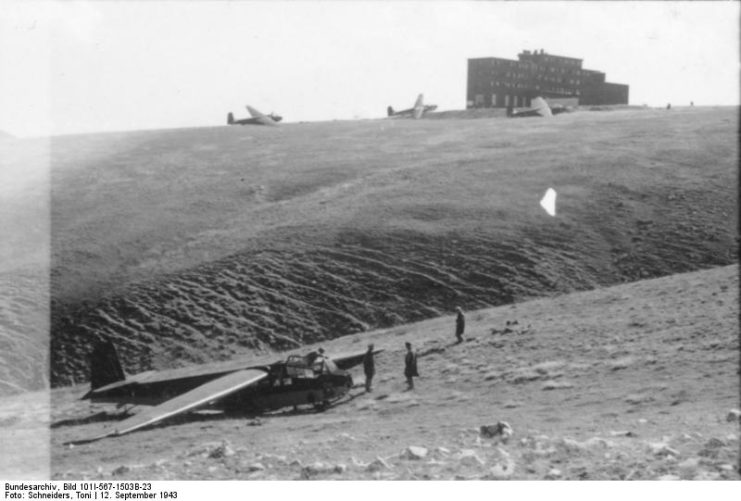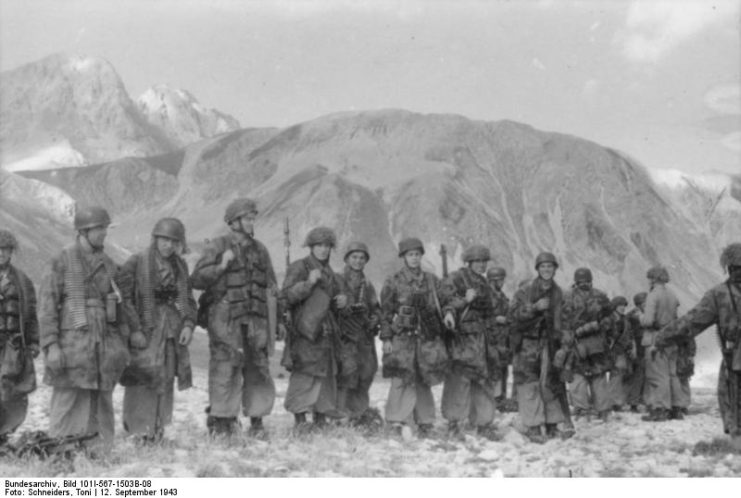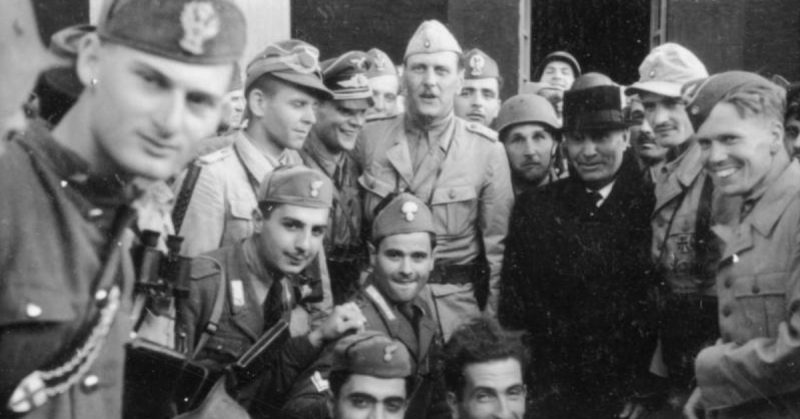War History online proudly presents this Guest Piece from Jon M. Brown.
Ranked among the more dramatic stories from the Second World War is that of the rescue of deposed Prime Minister of Italy Benito Mussolini. Daring though it was, it certainly lacked violent opposition. In fact, not a single shot was fired in the operation and the only “injuries” took place as a result of one of the gliders used crashing.
On the night of July 24, a few weeks after the American Invasion of Sicily and after air campaigns against Rome had begun, the Grand Council of Fascism held a “no confidence” vote against Benito Mussolini. Victor Emmanuel III, the King of Italy replaced and arrested him.
Mussolini met with the King the following day and tried to argue that the prior evening’s vote was neither legal nor binding. But the King would not be swayed, Italy’s position was untenable. No help was forthcoming from the Germans, as they had just suffered the catastrophic defeat at Stalingrad and the war had now come to Italian soil. On the 8th of September, the Allies had advanced onto the Italian mainland. Italy’s new government changed sides, joining the Allies.
Mussolini meanwhile had been moved from place to place in order to keep his location hidden and on August 26th he was taken to a ski resort in the mountainous region of Abruzzo. He had been treated more as a guest than a prisoner as the hotel had been emptied of guests and the guards treated him well.
Hitler had personally ordered that Mussolini be rescued. The responsibility fell to Otto Skorzeny, who would later be charged and acquitted for his role in the rescue operation. Once the location of where Mussolini was being held was discovered mostly through radio intercepts, planning began in earnest. Parachute operations were first considered but were ruled out due to the hilly nature of the area surrounding the hotel itself. But aerial recon showed a small field near the hotel and Skorzeny decided that a glider operation was their best option.

But even with the plan taking shape, this was still a very risky proposition and the Germans were anxious to stack the deck in their favor. Though they were not sure precisely how many Italian guards would be opposing them, they had estimated there would be between 200 and 300. The German team was comprised of 82 paratroopers and 26 S.S. troops, which would leave them outnumbered roughly 2:1. This is where an Italian general, Fernando Soleti comes into the picture. Skorzeny had worked into the plan that if an Italian officer was present at the raid, he could at least confuse and delay any response from the guards and possibly dissuade them from engaging what they might consider a friendly force. Soleti was not aware of the particulars of the operation until shortly before takeoff and he did everything possible to talk his way out of going, including feigning illness. General Kurt Student, who Soleti had appealed to personally went so far as to place Soleti under guard right up to the time of take off.
On September 12th, 1943 the operation commenced. There were 12 gliders in all and all but one landed without incident, the one that did crash only caused minor injuries. By all accounts, the 108 soldiers quickly overtook the guards without even firing a single shot. General Soleti was said to shout orders at Mussolini’s captors, threatening them with treason if they resisted. Mussolini was personally greeted by Otto Skorzeny within 5 minutes of the landings. Mussolini was then flown first to Rome and then Vienna where he would stay the night, meeting with Hitler just 2 days later.
Given the conditions in Italy at the time, the disdain people had for Mussolini and the fact that the Italians outnumbered the Germans nearly 2:1, it seems odd that this operation took place with not “little” resistance but NONE.
In 2016 author Vincenzo Di Michele concluded in his book “The Last Secret of Mussolini” that the Italian government was the real architect of Mussolini’s deliverance. He says that “Amid blackmail, hostages, threats, and subterfuge, the illustrious prisoner Mussolini was thus stolen away from the Allies and handed over to the Germans”.

When the facts are examined in their entirety this seems like little more than a training exercise. Daring? Perhaps, but only if it can be proven that the result was not arranged beforehand.
In either case, Mussolini was through as any kind of leader in Italy. Despite the fact he was installed as Prime Minister of the newly created “Italian Social Republic”, he was little more than a puppet leader. And in April of 1945, the end was at hand for the puppet state and the man himself. He had intended to escape to Switzerland but was stopped by partisans and was shot on the 28th of April 1945.
By: Jon M. Brown
